Tóm tắt Luận án Nghiên cứu tuyển chọn giống lúa ngắn ngày và biện pháp kỹ thuật thâm canh phục vụ sản xuất tại vùng duyên hải Nam Trung Bộ
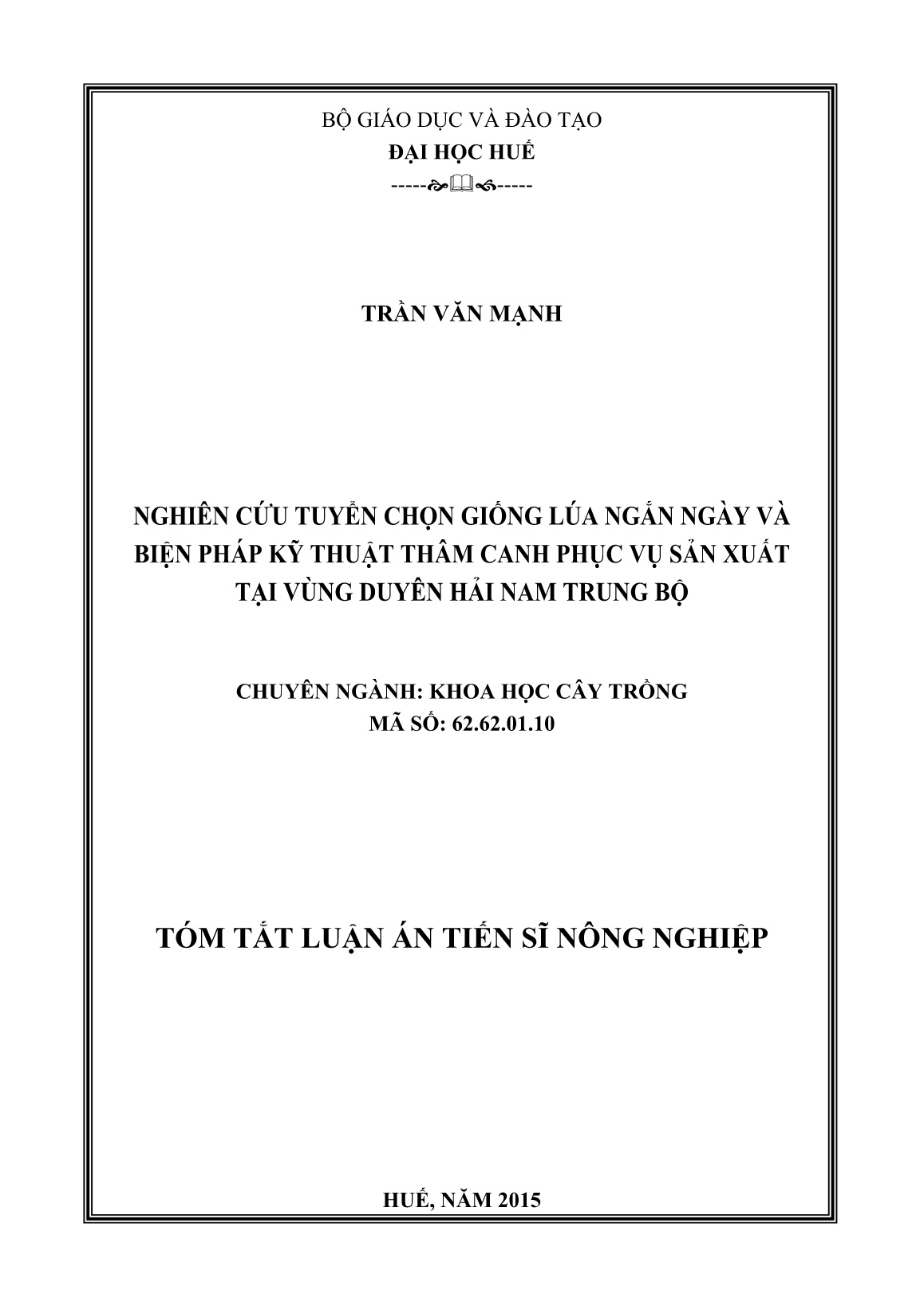
Trang 1

Trang 2
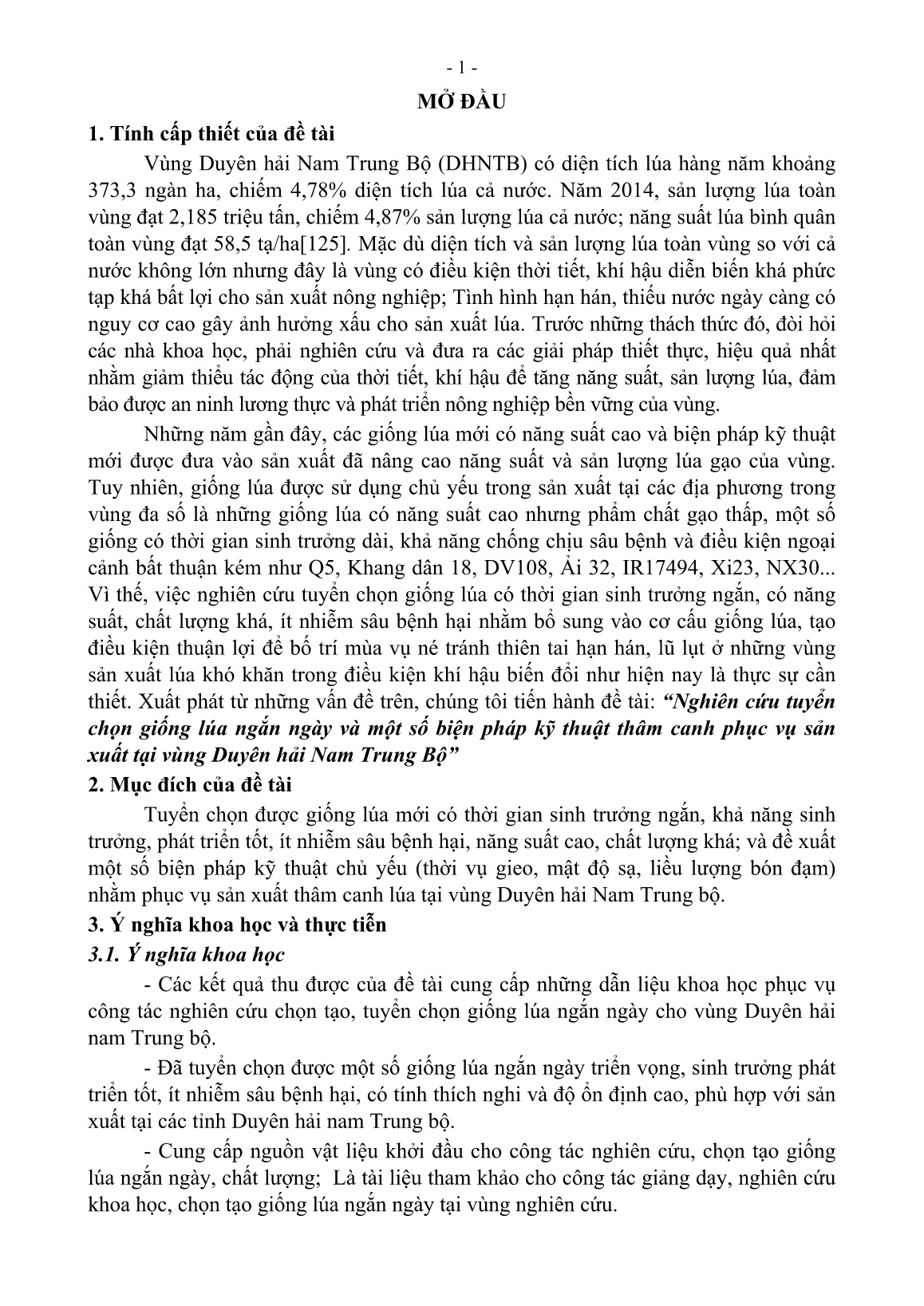
Trang 3
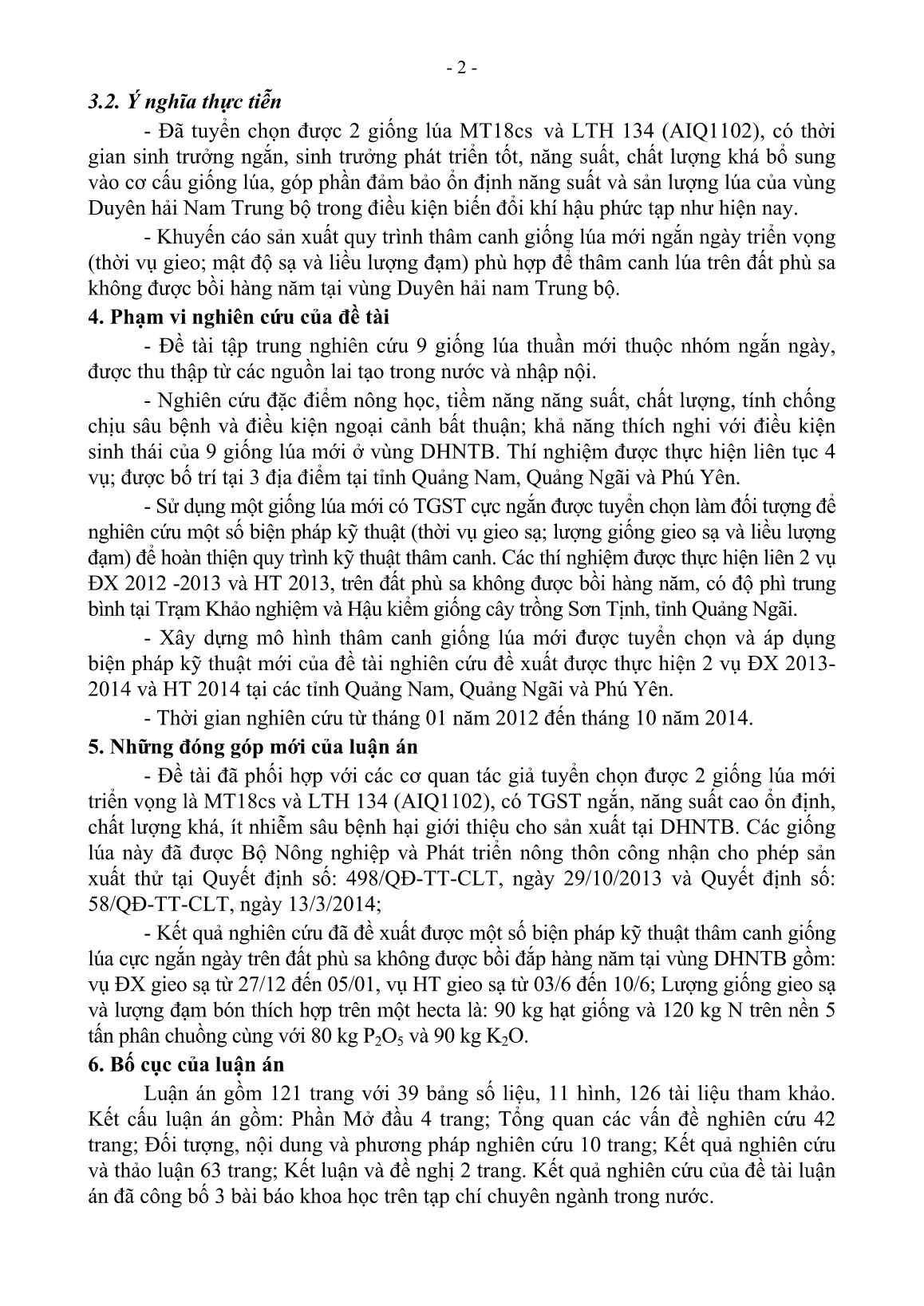
Trang 4
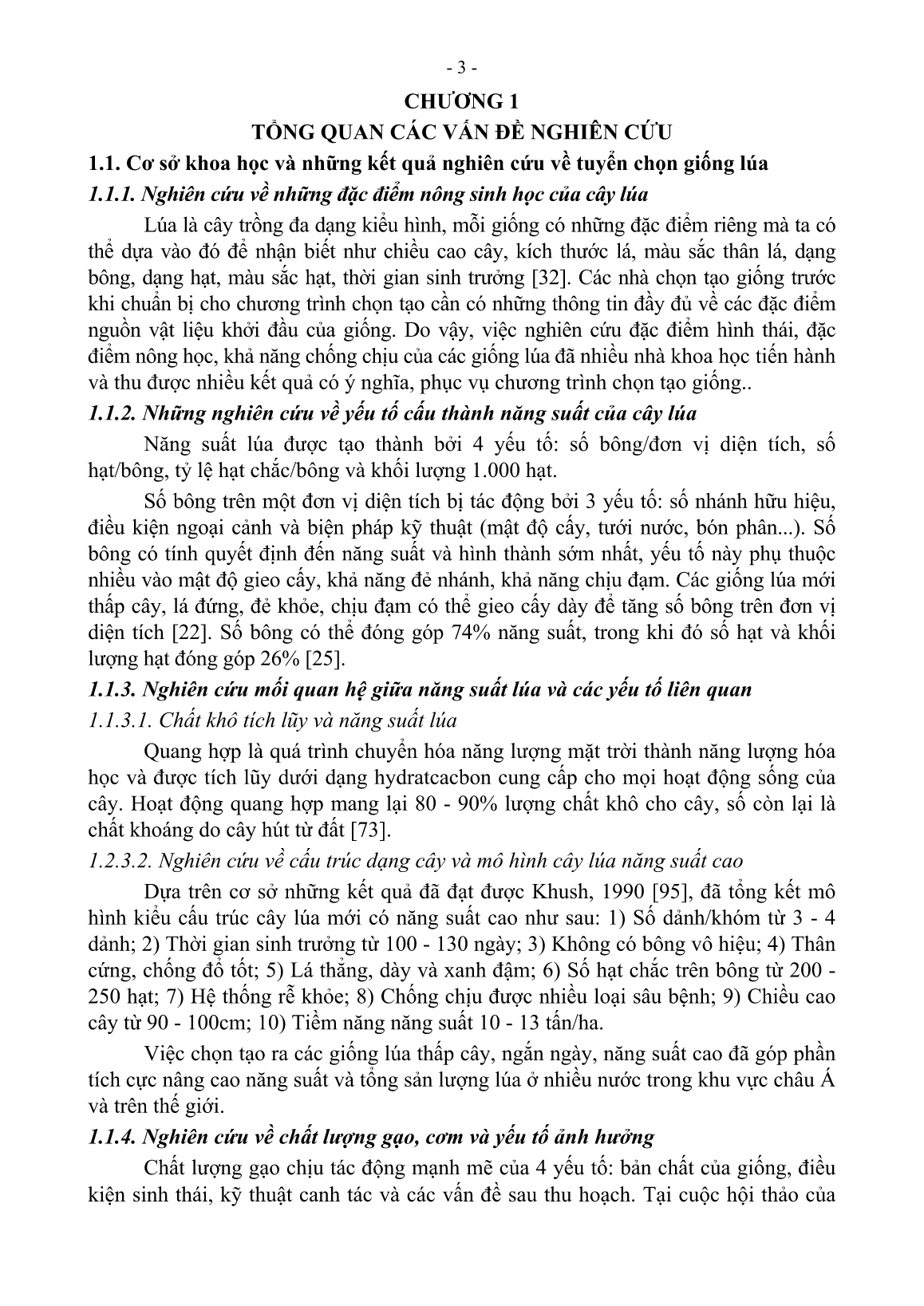
Trang 5
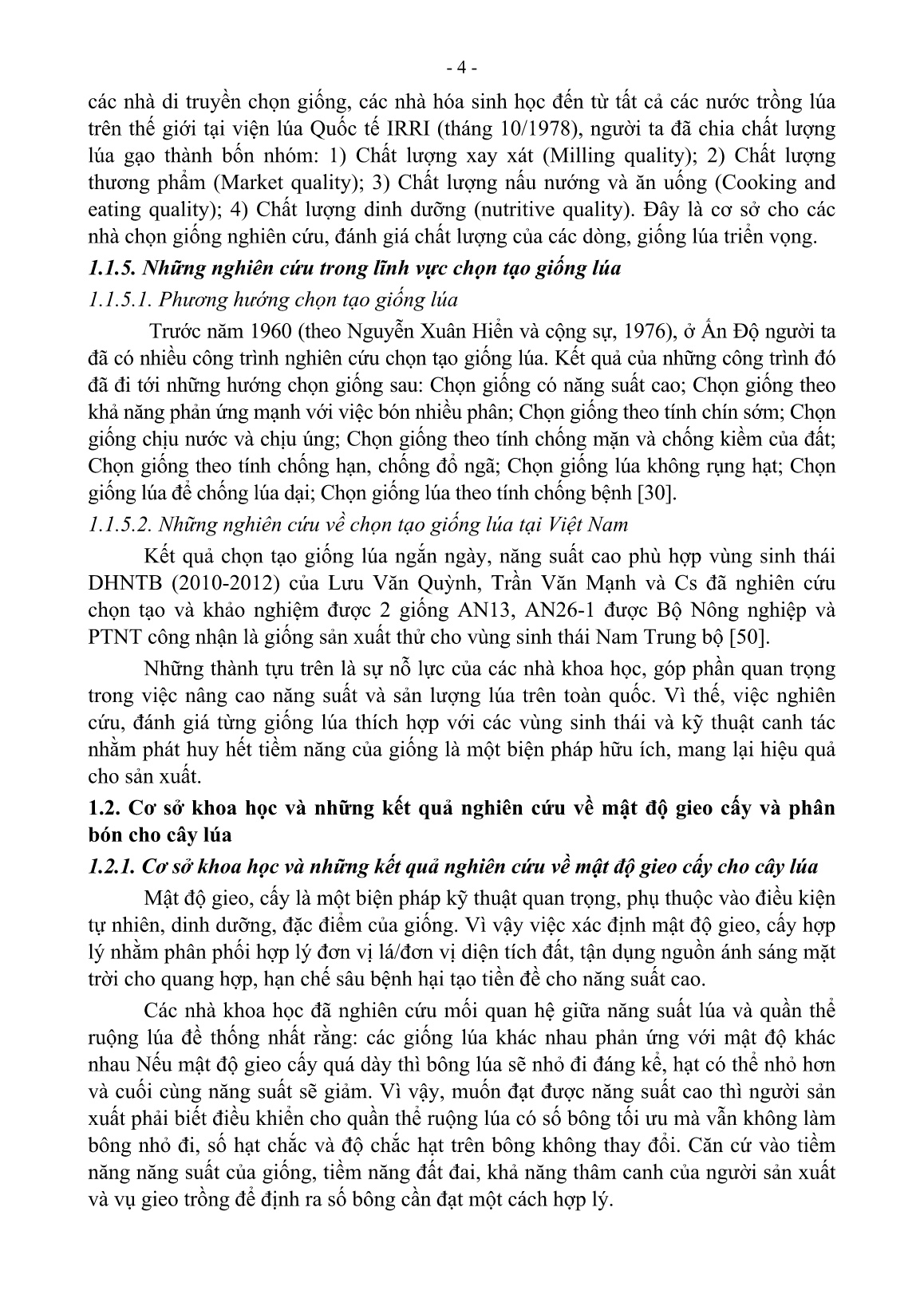
Trang 6
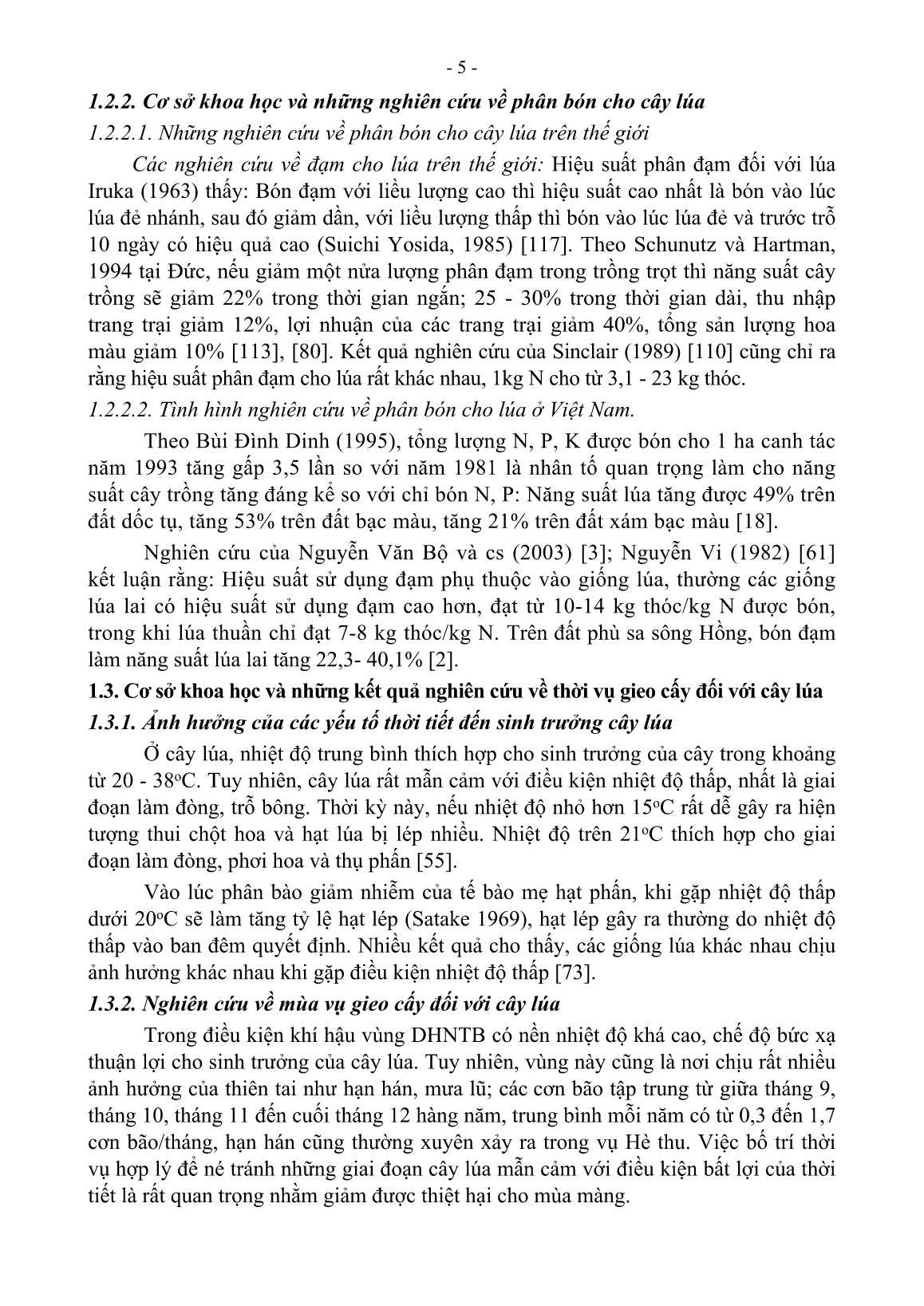
Trang 7
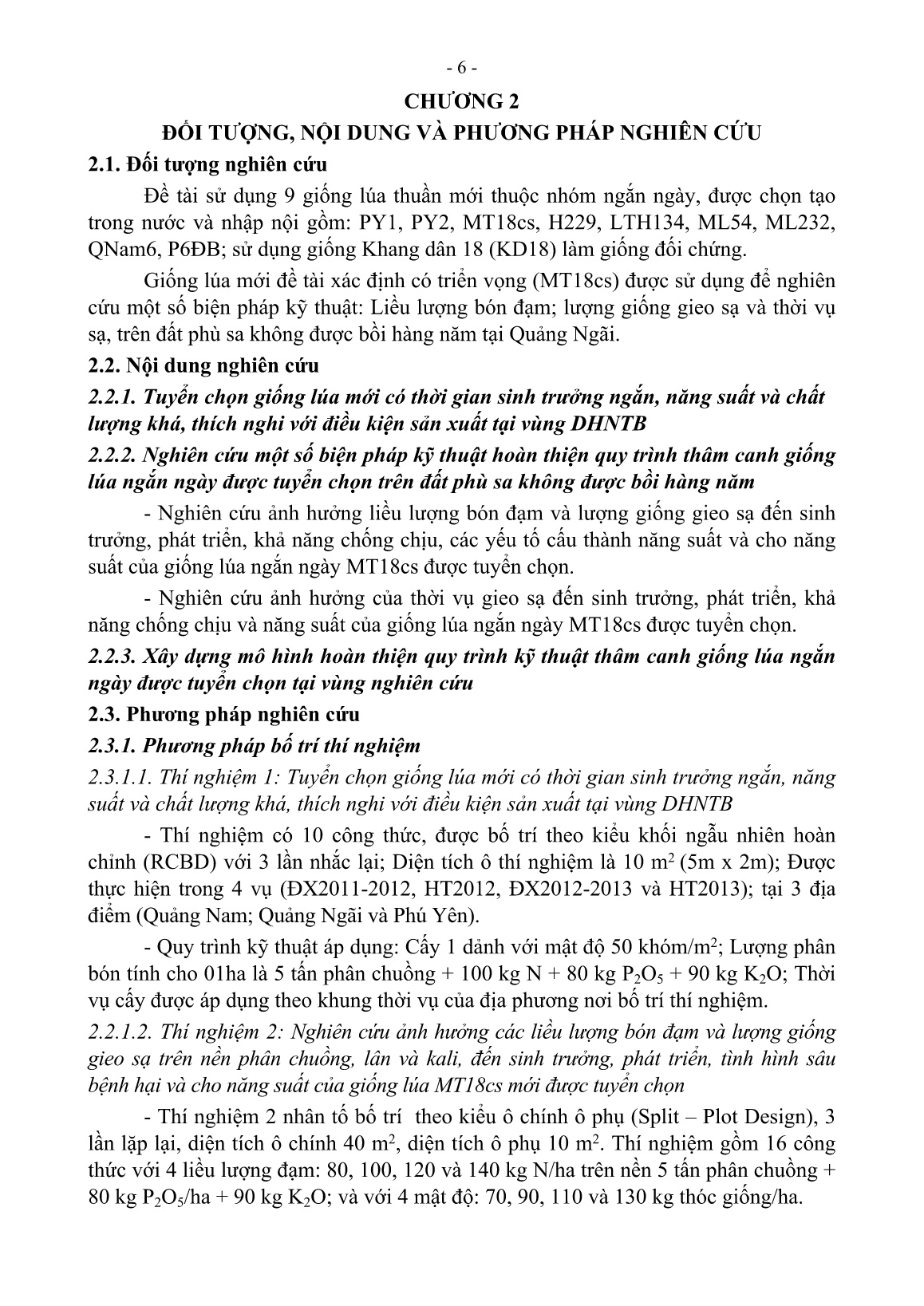
Trang 8
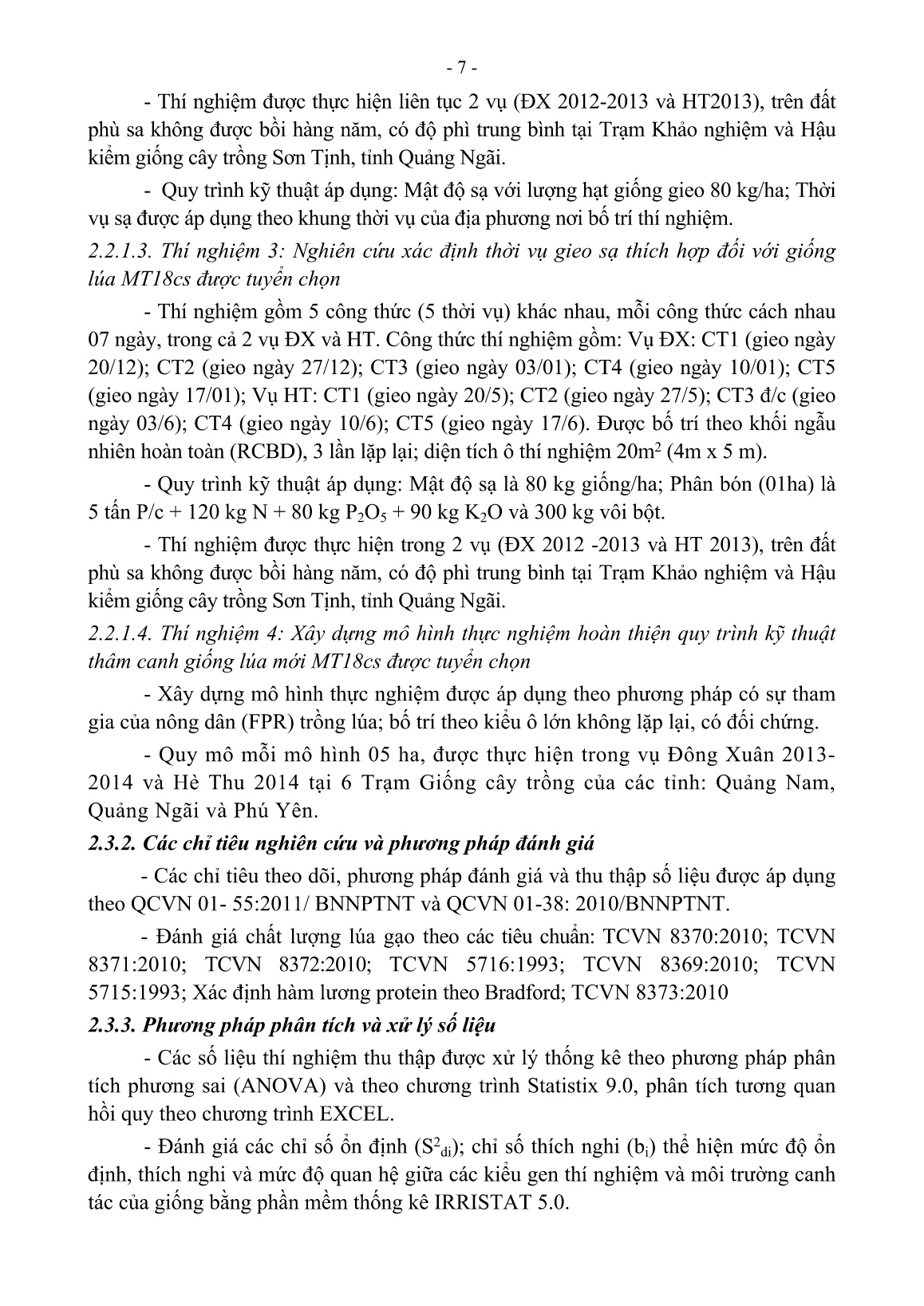
Trang 9
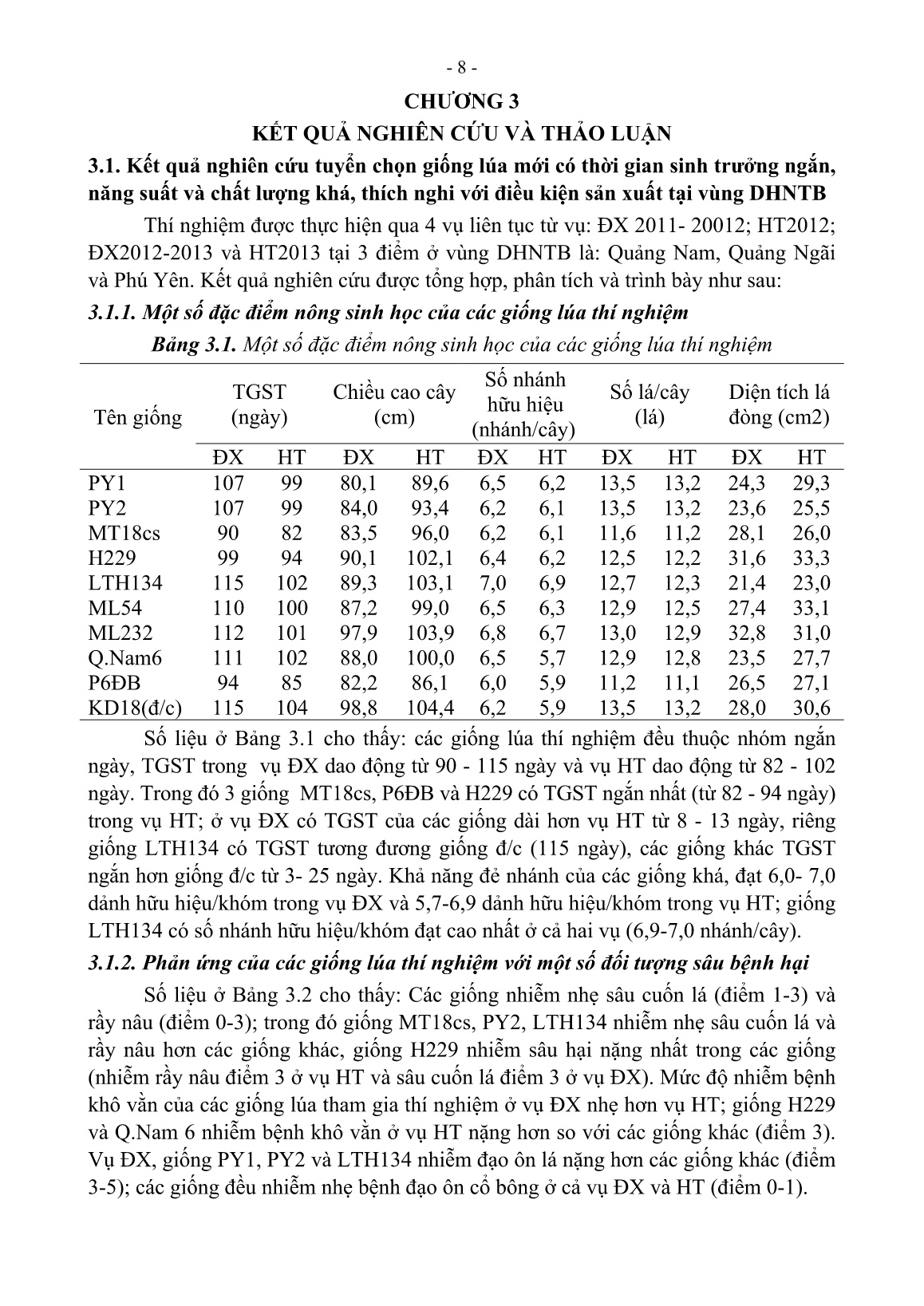
Trang 10
Tải về để xem bản đầy đủ
Bạn đang xem 10 trang mẫu của tài liệu "Tóm tắt Luận án Nghiên cứu tuyển chọn giống lúa ngắn ngày và biện pháp kỹ thuật thâm canh phục vụ sản xuất tại vùng duyên hải Nam Trung Bộ", để tải tài liệu gốc về máy hãy click vào nút Download ở trên.
Tóm tắt nội dung tài liệu: Tóm tắt Luận án Nghiên cứu tuyển chọn giống lúa ngắn ngày và biện pháp kỹ thuật thâm canh phục vụ sản xuất tại vùng duyên hải Nam Trung Bộ
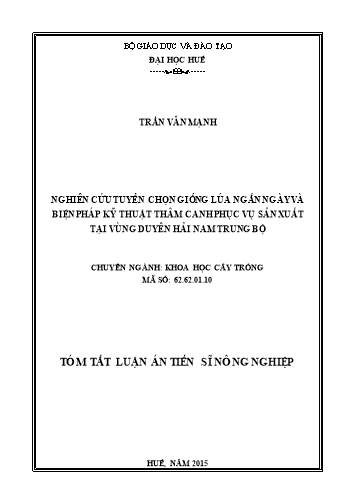
345,0 bông/m2, cao hơn giống đối chứng OMcs 96 và KD18 trong cả vụ Đông Xuân và Hè Thu. - Số hạt/bông: Giống lúa MT18cs có 125,4- 137,9 hạt/bông, cao hơn giống đối chứng OMcs 96 nhưng thấp hơn giống đối chứng KD18. - Tỉ lệ lép: Giống MT18cs có tỷ lệ lép thấp, thấp hơn giống đối chứng OMcs 96 và KD18. Giống MT18cs có tỷ lệ lép trung bình khoảng từ 9-13%. - Khối lượng 1.000 hạt: giống lúa MT18cs có khối lượng 1.000 hạt từ 20- 22 gam, cao hơn giống đối chứng KD18 từ 1,4- 2,2 gam. 3.3.2.3. Năng suất của giống lúa MT18cs ở các mô hình Số liệu Bảng 3.39 cho thấy: - Vụ ĐX năng suất giống MT18cs ở các mô hình dao động từ 55,2- 65,3 tạ/ha, trung bình đạt 60,6 tạ/ha, cao hơn giống đ/c OMcs 96 là 8,4 tạ/ha, tương đương 13,9%; và thấp hơn giống đ/c KD18 là 1,7 tạ/ha, tương đương 2,8%. - Vụ Hè Thu năng suất giống MT18cs ở các mô hình dao động từ 51,5-59,5 tạ/ha, trung bình đạt 56,1 tạ/ha, cao hơn giống đ/c OMcs 96 là 8,7 tạ/ha, tương đương 15,5% và thấp hơn giống đ/c KD18 là 2,7 tạ/ha, tương đương 4,8%. Bảng 3.39. Năng suất của giống lúa MT18cs tại các mô hình Vụ/ Địa điểm thực nghiệm Giống MT18cs OMcs 96 KD18 ĐX 2013-2014 Trạm Giống CT Nam Phước, Quảng Nam 61,5 50,5 65,3 Trạm Giống CTVN Bình Trung, Quảng Nam 62,2 54,1 63,8 Trạm KN và HK GCT Sơn Tịnh, Quảng Ngãi 65,3 53,2 63,0 Trạm Giống cây NN Đức Hiệp, Quảng Ngãi 61,5 55,5 62,6 Trạm Giống NN Hòa An, Phú Yên 55,2 48,5 59,1 Trạm Giống NN Hòa Đồng, Phú Yên 57,8 51,2 59,8 NS Trung bình vụ ĐX 60,6 52,2 62,3 HT 2014 Trạm Giống CT Nam Phước, Quảng Nam 56,2 47,0 59,0 Trạm Giống CTVN Bình Trung, Quảng Nam 57,5 49,2 60,7 Trạm KN và HK GCT Sơn Tịnh, Quảng Ngãi 59,5 52,7 60,0 Trạm Giống cây NN Đức Hiệp, Quảng Ngãi 58,0 49,9 59,5 Trạm Giống NN Hòa An, Phú Yên 53,8 45,5 55,7 Trạm Giống NN Hòa Đồng, Phú Yên 51,5 40,1 57,6 NS Trung bình vụ HT 56,1 47,4 58,8 Tóm lại: Đối với giống MT18cs có TGST cực ngắn ngày (vụ Đông Xuân: 90- 95 ngày; Hè Thu: 80- 85) khi áp dụng một số biện pháp kỹ thuật mới (mật độ sạ; liều lượng phân bón) được đề tài nghiên cứu đề xuất xây dựng các mô hình thực nghiệm cho thấy: Giống MT18cs có khả năng sinh trưởng, phát triển tốt ở cả vụ Đông Xuân và Hè Thu; thích hợp với cơ cấu mùa vụ của các tỉnh Duyên hải Nam Trung bộ, đặc biệt do có thời gian sinh trưởng cực ngắn ngày nên có khả năng bố trí thời vụ để né tránh với điều kiện thời tiết bất lợi như lũ lụt và hạn hán; Giống MT18cs ít sâu bệnh hại, khá cứng cây, chống đổ và chịu nóng khá; Khả năng thích ứng rộng. KẾT LUẬN VÀ ĐỀ NGHỊ 1. Kết luận 1.1. Kết quả nghiên cứu của đề tài đã đánh giá được một số đặc điểm nông học chính của 9 giống lúa thí nghiệm (PY1, PY2, MT18cs, H229, LTH134, ML54, ML232, Q.Nam 6 và P6ĐB). Các giống thí nghiệm có TGST thuộc nhóm ngắn ngày, phù hợp với cơ cấu mùa vụ tại các tỉnh DHNTB. Trong điều kiện vụ ĐX các giống PY1, MT18cs, H229, LTH134, ML54, Q.Nam 6 và P6ĐB cho năng suất ổn định ở tất cả các môi trường thí nghiệm; Giống PY2 cho năng suất ổn định ở môi trường thuận lợi, có điều kiện thâm canh cao; Giống ML232 cho năng suất không ổn định. Ở vụ HT các giống PY1, MT18cs, H229, LTH134, ML54, ML232, QNam 6 và P6ĐB cho năng suất ổn định; Giống PY2 cho năng suất không ổn định. 1.2. Đã tuyển chọn được 2 giống lúa triển vọng, có nhiều đặc điểm tốt cho sản xuất tại vùng DHNTB gồm: Giống MT18cs có TGST cực ngắn (vụ ĐX 90 ngày; HT từ 82 ngày), ít nhiễm sâu bệnh hại, có năng suất khá và ổn định ở các môi trường thí nghiệm cả 2 vụ ĐX và HT, tham gia cơ cấu giống lúa tại các địa phương hay bị ảnh hưởng bất thuận của thời tiết như hạn hán, lũ lụt; Giống LTH134 có TGST ngắn ngày (vụ ĐX 115 ngày; HT 102 ngày) ít nhiễm sâu bệnh hại, cho năng suất khá và ổn định qua các môi trường thí nghiệm ở cả 2 vụ ĐX và HT, chất lượng gạo tốt, cơm ngon, khả năng thâm canh cao. 1.3. Tại Quảng Ngãi và các tỉnh DHNTB có điều kiện tương tự, trên đất phù sa không được bồi đắp hàng năm, lượng giống gieo sạ và lượng đạm bón thích hợp cho năng suất và hiệu quả kinh tế cao nhất đối với giống lúa MT18cs là 90 kg hạt giống/ha và 120 kg N/ha trên nền 5 tấn phân chuồng + 80 kg P2O5 + 90 kg K2O. 1.4. Giống lúa có TGST thuộc nhóm cực ngắn như MT18cs, có thể bố trí thời vụ để né tránh các điều kiện bất lợi của thời tiết như hạn hán, lũ lụt. Vụ ĐX thời vụ gieo sạ thích hợp nhất từ 27/12- 03/01, để lúa trỗ vào trong khoảng đầu tháng 3 (tiết kinh trập), thu hoạch vào khoảng từ 05/4- 10/4; Vụ HT gieo sạ thích hợp nhất từ ngày 03/6 - 10/6 để lúa trỗ vào khoảng 28/7- 05/8 (trước tiết lập Thu), thu hoạch vào khoảng từ 20/8- 25/8. 1.5. Kết quả xây dựng mô hình thực nghiệm quy trình kỹ thuật thâm canh giống lúa MT18cs tại các địa phương cho thấy: giống có khả năng STPT tốt ở cả 2 vụ ĐX và HT, ít nhiễn sâu bệnh hại và chống đổ ngã tốt, năng năng suất khá và ổn định. 2. Đề nghị 2.1. Đưa vào sản xuất thử trên diện rộng giống lúa mới MT18cs và LTH134 (AIQ1102) mà đề tài đề xuất; Hai giống đã được Bộ Nông nghiệp và PTNT công nhận cho sản xuất thử tại các tỉnh Duyên hải Nam Trung bộ; Tiếp tục khảo nghiệm sản xuất các giống lúa mới bước đầu được đề tài đánh giá có triển vọng: ML54, ML232, PY1 tại các tỉnh Duyên hải Nam Trung bộ trong điều kiện sản xuất để có kết luận toàn diện hơn. 2.2. Sử dụng các kết quả nghiên cứu của đề tài về một số biện pháp kỹ thuật thâm canh giống lúa mới ngắn ngày MT18cs trên đất phù sa không được bồi hàng năm tại tại tỉnh Quảng Ngãi và các tỉnh Duyên hải Nam Trung bộ có điều kiện tương tự. CÁC CÔNG TRÌNH KHOA HỌC ĐÃ CÔNG BỐ CÓ LIÊN QUAN ĐẾN LUẬN ÁN 1. Trần Văn Mạnh, Nguyễn Minh Hiếu, Nguyễn Như Hải, Nguyễn Thị Mơ. Đánh giá khả năng thích nghi và độ ổn định năng suất của một số giống lúa ngắn ngày tại các tỉnh Duyên hải Nam Trung bộ. Tạp chí Nông nghiệp và Phát triển nông thôn, Chuyên đề: Nông Lâm nghiệp khu vực Miền Trung- Tây Nguyên, tháng 4/2014, tr 5- 11. 2. Trần Văn Mạnh, Nguyễn Minh Hiếu, Nguyễn Như Hải, Nguyễn Thị Mơ. Nghiên cứu tuyển chọn giống lúa thuần ngắn ngày tại Duyên hải Nam Trung bộ. Tạp chí Nông nghiệp và Phát triển nông thôn, Chuyên đề: Giống cây trồng, vật nuôi, Tập 1 - tháng 6/2014, tr 81- 87. 3. Trần Văn Mạnh, Nguyễn Minh Hiếu, Nguyễn Như Hải, Nguyễn Thị Mơ. Ảnh hưởng của các mức bón đạm và mật độ sạ đối với giống lúa ngắn ngày MT18cs, tại Quảng Ngãi. Tạp chí Nông nghiệp và Phát triển nông thôn, Kỳ 1- tháng 11/2014, tr 45-52. MINISTRY OF EDUCATION AND TRAINING HUE UNIVERSITY -----&----- TRAN VAN MANH STUDYING TO SELECT SHORT DURATION RICE VARIETIES AND INTENSIVE FARMING TECHNIQUES FOR RICE PRODUCTION AT SOUTH CENTRAL COAST REGION MAJOR: PLANT SCIENCE CODE: 62.62.01.10 ABSTRACT OF AGRICULTURAL THESIS HUE, 2015 The work has been achieved at Hue College of Forestry and Agriculture, Hue University Thesis Supervisors: Ass.Prof. Dr. Nguyễn Minh Hiếu Dr. Nguyễn Như Hải Reviewer 1: Reviewer 2: Reviewer 3: The Thesis will be defended at Hue University Thesis committee:... . At . h. On .(day)....(month) in 2015. The Thesis is able to reach at the library: . . . INTRODUCTION 1. The Thesis’s Statement The Southern Coastal Central (SCC) covers an area of 374.9 thousand hectares of rice, with the rice production of 2.083 million tons, making up 4.73% of the rice output of the country; the average rice yield of the entire region reached 56.9/ ha, which is 1.1 tons/ ha higher than the national average yield [125]. The Southern Coastal Central has pretty complicated weather conditions and climate causing detrimental to the production. Droughts, water shortages are increasingly at high risk for agricultural production. Therefore, the scientists and managers from the central to local are required to study and offer the most practical and effective solutions in order to increase the productivity and meet the demand of both domestic and export. In recent years, the new high-yield rice varieties and new technical measures have been put into production to enhance the region's grain output. However, rice for production mainly used in the majority of provinces in the region are high-yield rice varieties but at low quality, some varieties have long growing period, resistance to pests and unfavorable external conditions such as Q5, Khang Dan 18, IR17494, Xi23, NX30 .. Therefore, it is needed to research and select short-day rice varieties with high yield, good quality, and less pest infection in order to complement on the structure of rice varieties, which create favorable conditions for the crops to avoid natural disasters such as droughts and floods in the rice-producing regions in changeable climatic conditions. Stemming from the above issues, we conducted the Thesis: “Studying to select short duration rice varieties and intensive farming techniques for rice production at South Central Coast region”. 2. Rationale of the Thesis To select the new rice varieties which are short growth time, ability to grow well, less harmful pest infection, high productivity, high quality; and to propose a number of technical measures (seeding time, sowing density, and fertilizer dose) for rice intensive cultivation in the Southern Central Coast. 3. Scientific and Practical Significance 3.1. Scientific Significance - The study results will provide scientific data to additional research resources on short day variety selection. - The study have selected several rice varieties with shorter growing time, which are well developing, less pest infecting, highly adapting and of high stability, and suitable to production in the Central South Province - The research results will provide intensive technical processes about short day varieties in the study area. - The result will supply initial materials for further research, and breeding of the quality short rice for the Southern Central Provinces. 3.2. Practical Significance - Added to produce new rice varieties with shorter growing time, good growth and development, yield and quality rather to ensure stability and productivity of rice production in the Southern Central region conditions in existing climate changes. - Recommended for intensive production processes for new varieties (seasonal sow sowing density and nitrogen dosage) suitable for paddy cultivation in rich soil without deposit annually at the Southern Central Coast area. 4. Scope of the study - The study has focused on group of the nine new short - day rice varieties, obtained from domestically hibrid rice varieties and from importation. - The study researches the potential productivity, quality, the ability to resistance to pest, diseases, and unfavorable external conditions; the ability to adapt to the ecological conditions of the Southern Central region of the nine new varieties. The experiment was conducted repeatedly in 4 cases at three sites in the Southern Central Coast. - In the study, a new rice variety with extremely short growing time is selected as an object to study some technical measures (seasonal sowing, seed sowing and nitrogen dose). The experiments were performed in Winter –Spring crop in 2012 -2013 and in the Summer – Autum crop in 2013 on alluvial land without annual deposit, and the average fertility in Farm of Experiment and Post-inspection on plant varieties in Son Tinh, Quang Ngai Province. - The study has built a model of selected new intensive varieties and new techniques of the proposed research to be implemented in Winter-Spring crop in 2013 - 2014 and Summer – Autum crop in 2014 in Quang Nam, Quang Ngai and Phu Yen. - Research time lasted from January, 2012 to October 2014. 5. New Contribution of the Thesis - The study has recruited two new varieties: MT18cs and LTH 134 with short growing time, high yield stability, good quality, less pest infection; and as the most prospective varieties in Southern Central Coast. These varieties have been recognized by the Ministry of Agriculture and Rural Development to produce in Decision No. 498/QD-TT-CLT, dated 29/10/2013 and the Decision No. 58/QD-TT-CLT, dated 03.13.2014 of the Cultivation Department, Ministry of Agriculture and Rural Development; - Research results have suggested a number of intensive production techniques for very short day varieties on alluvial soil which was not deposited annually in Southern Central Coast region, such as, appropriate sowing in Winter- Spring crop lasting from 27th of December to 05th of January, for Summer-Autumn crop sowing from 03rd to 06th of June; The appropriate amount of seeds and fertilizer per hectare is 90 kg and 120 kg, respectively, in 5 tons of matured manure with 80 kg P2O5 and 90 kg K2O. 6. Structure of the Thesis The thesis consists of 121 pages with 39 tables, 11 pictures, and 126 references. The introduction of the thesis is presented in 4 pages; the literature review includes 42 pages; the next 10 pages mention the object, content and methodology of the study; the results of research and discussion are written within the next 63 pages; and lastly, the thesis concludes and proposes suggestion in 2 pages. Findings of the study were published 3 scientific papers in Vietnam technical journals. CHAPTER 1 LITERATURE REVIEW 1.1. Scientific basis and research results on rice variety selection 1.1.1. Research on biological and agricultural characteristics of rice Rice is a diverse crop plant, each variety has its own characteristics from which people can recognise their height, leaf size, leaf color, flower shape, seed shape, seed color, and growth time [32]. The breeders before preparing for the breeding scheme should have sufficient information about the characteristics of the starting material source of seed. Therefore, the study of morphological traits, agronomic characteristics, the ability of resistant rice varieties has been conducted for a long time, and obtained significant results. 1.1.2. Research on factors affecting rice yield. Rice yields are made up of four elements: the flower / unit area, number of particles / flower, the propotion of grain/ flower and 1000 grain weight. Number of flowers per unit area are affected by three factors: the number of effective branches, external conditions and technical measures (density transplants, watering, fertilizing ...). Number flower is crucial to productivity and its earliest form, this factor depends on the density of sowing, tillering ability, nitrogen fertilizer absorption. The new varieties of low plants, upright leaf, good production, nitrogen fertilizer absoption and ablility to have thick sowing to increase the number of flower per unit area [22]. Flower number could contribute on 74% of yield, while the number and volume of seeds occupied 26% [25]. 1.1.3. Research on the relationship between rice yield and related factors 1.1.3.1. The accumulated dried substance and rice yield Photosynthesis is the process of converting solar energy into chemical energy and accumulated in the form of cacbonhydrates to to support plant life. Photosynthetic activity provides the plants with 80-90% dry substances, while plants absorb minerals (the rest) from the soil [73]. 1.2.3.2. Research on the structure and model of high-yielding rice Based on a research results in 1990 [95], Khush summarized the model of new high-yield rice, as follows, 1) The number of strand / clump of 3-4 strands; 2) The growing time of 100-130 days; 3) There is no disabled flower; 4) hard stalk, good anti-dump; 5) upright Leaves, thick and dark green; 6) Number of seeds per flower from 200-250 seeds; 7) strong root system; 8) Anti-pest resistance; 9) Plant height from 90 - 100 cm; 10) potential yield of 10-13 tons / ha. Selection of short rice varieties with short time growing and high productivity has contributed positively on improving productivity and gross product in many countries in the Asian region and around the world. 1.1.4. Research on the quality of rice, cooked rice and affecting factors The rice quality is strongly affected by four factors: the nature of the variety, the ecological conditions, farming techniques and post-harvest issues. At the conference of genetic breeders at the International Institute IRRI (May 10/1978), biochemists from all rice – cultivated countries in the world divided rice quality into four groups: 1) Milling quality; 2) Market quality; 3) Cooking and eating quality; 4) Nutritive quality. These have been the basis for breeders to study and evaluate the quality of the good rice varieties. 1.1.5. Research on breeding rice varieties. 1.1.5.1. Orientation of rice variety breeding According to Nguyen Xuan Hien et al. (1976), prior to 1960, there has had much research on rice breeding in India. Their results showed some methods of rice variety selection such as, Selection of high productivity varieties; Selection of varieties based on their strongly reaction to much fertilizer; breeding the early ripening varieties; Selection of water and waterlodging resistant varieties; Selection of varieties to resist salinity and alkalinity of the soil; Selection of varieties to resist drought and dumping; Selecting varieties of less falling seeds; Selection of varieties against wild rice varieties; Choosing disease-resistant rice varieties [30]. 1.1.5.2. Research on breeding rice varieties in Vietnam Based on the results of breeding high-yield short-day rice in Central South (2010-2012), Luu Van Quynh, Tran Van Manh et al. have bred and experimented two varieties namely AN13, AN26-1, which have been accredited by Ministry of Agriculture and Rural Development as the trial varieties to be applied in the Southern Central ecoregion [50]. These achievements are the efforts of scientists and agricultural managers actively contributing improving rice yields and acreage nationwide. Therefore, it is necessary that the study and evaluation of the rice varieties suitable for various ecological zones and farming techniques should be useful and effective in order to make use of their potential ability in production. 1.2. The scientific research basis and the results on rice cultivation density and fertilizing 1.2.1. The scientific research basis and the results on rice cultivation density In the ricefield, density of sowing, sowing and strands affect yield and yield factors. If the field is thickly sown or it has multiple strands per clump, the rice flower clusters and particles will be significantly smaller, which may ultimately reduce productivity. Therefore, to achieve high yield, the breeders have to acknowledge about managing the rice fields so as to have the optimal number of flowers without reducing the flower size and keeping their grains unchanged. Based on the yield potential of varieties, the land potential, the ability of producing intensive and growing season, the breeders can determine the flowers number appropriatly. 1.2.2. The scientific research basis and practical research on fertilizer 1.2.2.1. Worldwide research on rice fertilizers Research of rice nitrogen fertilizer in the world: Nitrogen fertilizer efficiency for Iruka rice (1963) showed that when applying high dose of nitrogen fertilizer, the highest efficiency was achieved at tillering stage, then it declined. For little fertilzing, it was effective to apply fertilizers at booting stage and 10 days prior to flowering stage (Suichi Yosida, 1985) [117]. According to Schunutz and Hartman (1994) in Germany, if the nitrogen fertilizer was halved, the crop yield will be reduced by 22% in a short time; and by 25-30% in the long term, the farm income dropped 12%, the profitability of farms fell by 40%, and total crop output fell to 10% [113], [80]. Findings of Sinclair (1989) [110] also indicated that fertilizer efficiency was various in accordance with different rice, specifically, 1kg of N is used for from 3.1 to 23 kg of rice. 1.2.2.2. Research on rice fertilizing in Vietnam According to Bui Dinh Dinh (1995), the fact that the total amount of N, P, K fertilizers applied for 1 ha of cultivation in 1993 increased 3.5 times compared to that in 1981 was considered as a
File đính kèm:
 tom_tat_luan_an_nghien_cuu_tuyen_chon_giong_lua_ngan_ngay_va.doc
tom_tat_luan_an_nghien_cuu_tuyen_chon_giong_lua_ngan_ngay_va.doc

